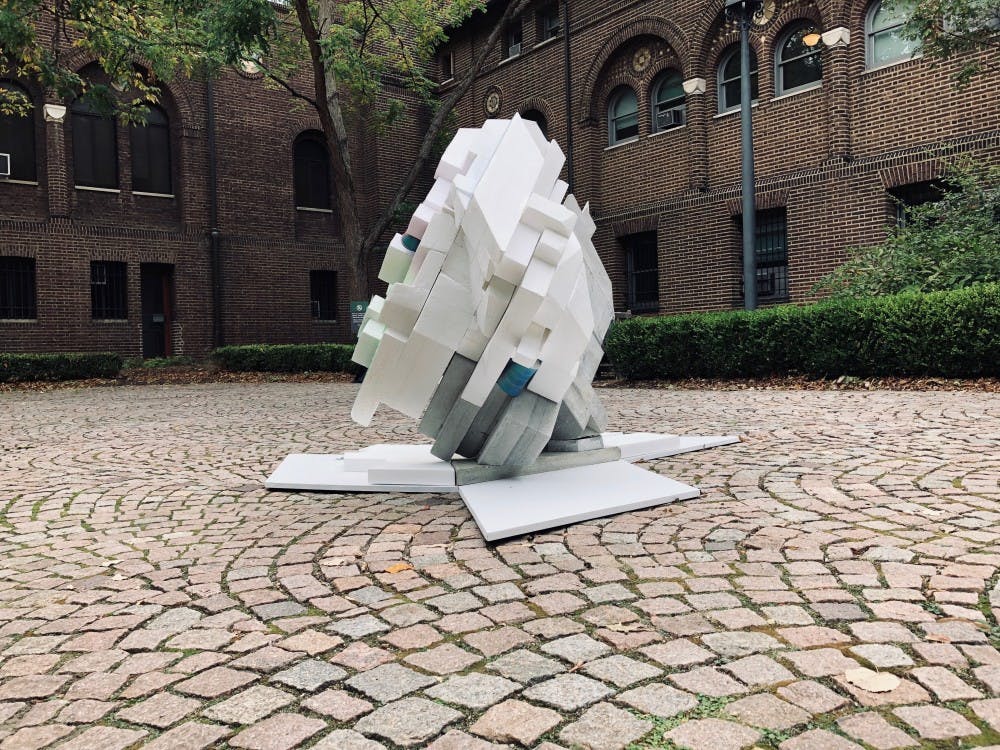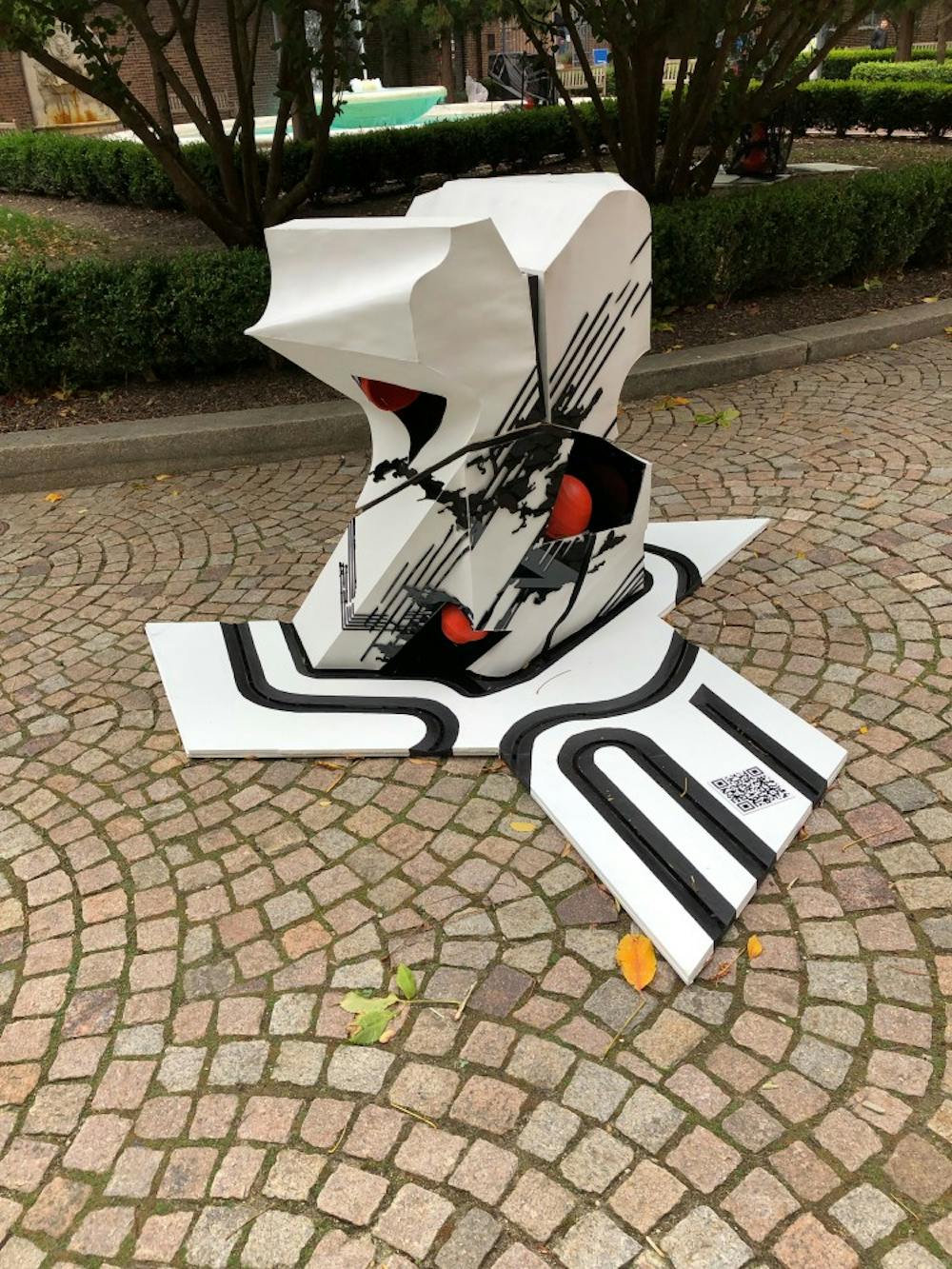
Students were asked to create displays that contained four different artifacts from the museum using a process called photogrammetry. (Photo from Nicholas Houser)
For the first time in a three-year collaboration between graduate architecture students and the Penn Museum, student-designed installations based on museum artifacts were on display to the public in the Stoner Courtyard.
The five-week project, called Curious Cabinets, requires first-year architecture students to scan museum artifacts and develop 18 different 3D models as part of their introductory design studio. In past years, the museum had displayed six of the statues for one day, said Anne Tiballi, the Mellon director of academic engagement at the Penn Museum. Because this is the final year of the collaboration, Tiballi said, the museum chose to display all the models to the public for a week.
Course studio coordinator Andrew Saunders said by the end of the semester, students will have designed an extension of the museum archives. The Curious Cabinets project serves as a precursor to the museum extension, which will be the culmination of the semester's work.
Saunders added that this year's title, "Curious Cabinets," plays on German forerunners of museums, called Wunderkammers, or “cabinets of curiosities.”

Each Curious Cabinet has a QR code that when scanned brings visitors to the display’s web page. (Photo from Nicholas Houser)
"It's an exercise to start thinking about how to curate, to store, to design these projects to accommodate those artifacts," Saunders said. “As architects, we're just as excited about the actual design of the room or the cabinet as we are the art."
Using a process called photogrammetry, students scanned artifacts ranging from Ming Dynasty vases to 20th century Papua New Guinean neck rests. The students were asked to create displays that contained four different artifacts from the museum. Saunders said students were assigned different materials for making the displays and were required to mount displays on a triangular gridded base.
First-year architecture student Benjamin Hergert said the outdoors aspect of the installation posed material challenges. Hergert's group was required to use wood veneer in creating their display called “Stratigraphic Vestige." The thin material made it difficult to maintain the entire structure when exposed to rain, wind, and humidity, Hergert said.
Because the display sat in the middle of the courtyard, until Oct. 18, students also had to consider the perception of the display from multiple angles.
“We realized we needed to create something that could be viewed differently from each side,” first-year architecture student Nicholas Houser said. “We only wanted one artifact to be displayed per view.”
The displays allowed visitors to the courtyard to engage with artifacts differently, Tiballi said. Rather than having boards of information like those in the museum, each Curious Cabinet had a QR code that when scanned brings visitors to the display’s web page. The project website includes illustrations and models of the artifacts and displays the early stages of each project.
“Architectural understanding is mainly limited to visual understanding,” Hergert said. “It's interesting we chose to put all these diagrams onto a website and let the public try to piece it together for themselves.”
In the future, Tiballi said she hopes to explore museum collaborations with other schools in the University to engage students from all disciplines.
The Daily Pennsylvanian is an independent, student-run newspaper. Please consider making a donation to support the coverage that shapes the University. Your generosity ensures a future of strong journalism at Penn.
Donate



